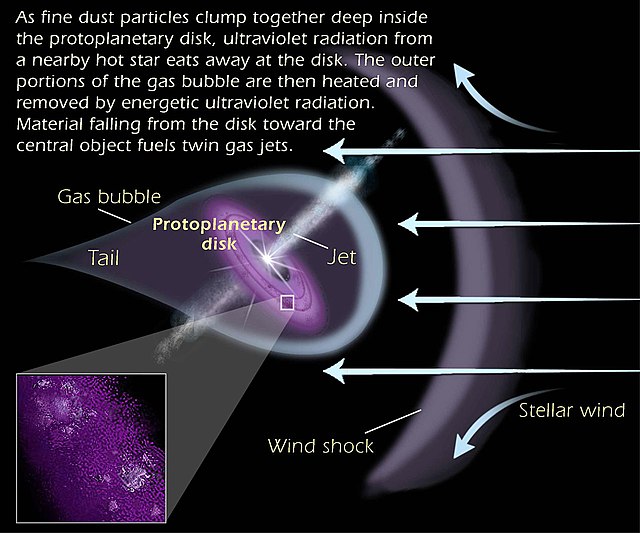An astrophysical jet is an astronomical phenomenon where outflows of ionised matter are emitted as extended beams along the axis of rotation. When this greatly accelerated matter in the beam approaches the speed of light, astrophysical jets become relativistic jets as they show effects from special relativity.
The starburst galaxy Centaurus A, with its plasma jets extending over a million light years, is considered as the closest active radio galaxy to Earth. The 870-micron submillimetre data, from LABOCA on APEX, are shown in orange. X-ray data from the Chandra X-ray Observatory are shown in blue. Visible light data from the Wide Field Imager (WFI) on the MPG/ESO 2.2 m telescope located at La Silla, Chile, show the background stars and the galaxy's characteristic
Elliptical galaxy M87 emitting a relativistic jet, as seen by the Hubble Space Telescope
The pulsar IGR J11014-6103 with supernova remnant origin, nebula and jet
Illustration of the dynamics of a proplyd, including a jet
The speed of light in vacuum, commonly denoted c, is a universal physical constant that is exactly equal to 299,792,458 metres per second. According to the special theory of relativity, c is the upper limit for the speed at which conventional matter or energy can travel through space.
One of the last and most accurate time of flight measurements, Michelson, Pease and Pearson's 1930–1935 experiment used a rotating mirror and a one-mile (1.6 km) long vacuum chamber which the light beam traversed 10 times. It achieved accuracy of ±11 km/s.
Hendrik Lorentz (right) with Albert Einstein (1921)






